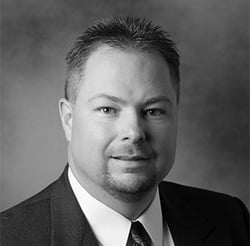Part 1 in our series on Funding Myths & Misconceptions. Click here to see Part 2.
Wheeled Mobility Funding can be a daunting obstacle in the procuring of complex rehab equipment. On top of the difficulties of funding there are a lot of myths and misconceptions out there that make funding all the more confusing. Today we're breaking down some of these myths and misconceptions in the first part of our two part series.
Myth & Misconception #1: Nobody pays for K0108
There is some truth to K0108 being a difficult code to get funded, but most funding sources will pay for K0108 when billed and justified properly. K0108 is a miscellaneous code which can represent anything from a bag of screws to a complex driver control which creates a significant range of pricing to be considered. K0108 is reimbursed based on a manual review process so it is important that documentation paints a clear picture of what the item is and why it is medically necessary. Since claims for K0108 are not processed systematically, as other items with specific HCPCS codes and fee schedule amounts, it can create the sense that it’s a bad code or never paid. K0108 is not impossible to get covered but it does require a little more diligence than other codes to get paid.
Myth & Misconception #2: Providers can no longer provide titanium upgrades to Medicare beneficiaries
Back in 2016, Medicare published an announcement that titanium and other materials were taken into consideration when establishing the K0005 (ultralightweight wheelchair) code in the early 90’s and therefore included in the wheelchair base allowance. Although there is nothing in the Medicare archives to support this as true. Titanium doesn’t cost the Medicare program any money, so all this announcement does is take away a patient’s freedom of choice. Fortunately, Medicare beneficiaries can still receive titanium upgrades under the current guidelines, but it requires the entire wheelchair to be billed unassigned which creates significantly higher out of pocket expense for the patient upfront. Rather than only paying out of pocket for the titanium upgrade, the patient must pay for the entire wheelchair including the upgrade and any accessories. This scenario can easily put titanium out of financial reach for many individuals. There is significant work being in done in Washington DC with our legislators and with the CMS administration to correct this policy and restore a patient’s right to choose titanium without creating such a significant cost burden.
Myth & Misconception #3: Providers can bill insurance for items they receive for free from the manufacturer
Funding sources expect to be treated equally--if the provider doesn’t pay the manufacturer anything for an item then the insurance company doesn’t expect to pay the provider anything for it either. Some manufacturers have developed ways to work around this with creative invoicing but that doesn’t make it right, it just makes them complicit. Providers should know there is risk involved should a funding source realize they’re being billed for items that weren’t paid for by the provider.
Myth & Misconception #4: I can’t provide SmartDrive because a Group 2 power wheelchair is so much cheaper
This is an objection that some insurance companies will use when they wish to pay for the least costly, medically appropriate alternative. There is a significant difference in reimbursement between a Smart Drive and a Group 2 power wheelchair but in this case the cheaper alternative isn’t always the most medically appropriate. Someone who is in a K0005 wheelchair has their entire home environment and mode of transportation situated to accommodate a manual wheelchair, not a 300-pound power wheelchair. Additionally, a K0005 patient has complex needs that may not be able to be accommodated in a standard power wheelchair. Why would we take a complex rehab patient and put them in a standard piece of equipment? When justifying Smart Drive, it is important to identify the things about a standard power wheelchair that will not be conducive to the patient’s independence with daily activities.
Permobil’s funding team can answer any questions in regards to funding you might have and can be reached by email at Jim.Stephenson@permobil.com. Check back next week as we go over the rest of the common funding myths and misconceptions.
 Jim Stephenson
Jim Stephenson
Reimbursement and Coding Manager
Jim Stephenson is the Reimbursement and Coding Manager at Permobil. Over the past 25 years, he has worked on all sides of the healthcare reimbursement spectrum, the last 15 years in the CRT/DME industry. His broad background has provided him with vast experience and a unique perspective in working with funding sources, providers, physicians/clinicians and consumers. He is currently a member of the DME MAC Advisory Councils, the Complex Rehab and Mobility Council (CRMC) and the Regulatory Council for the American Association for Homecare. At Permobil, he works closely with the product development, government affairs, clinical education, sales and marketing teams. His responsibilities include: assisting providers with their coding and billing inquiries, providing support to the sales and customer service staffs and staying abreast of the ever-changing complex rehab industry.
Icon made by Good Ware from www.flaticon.com
